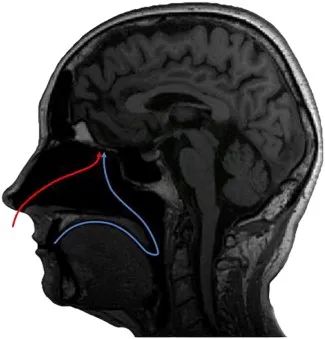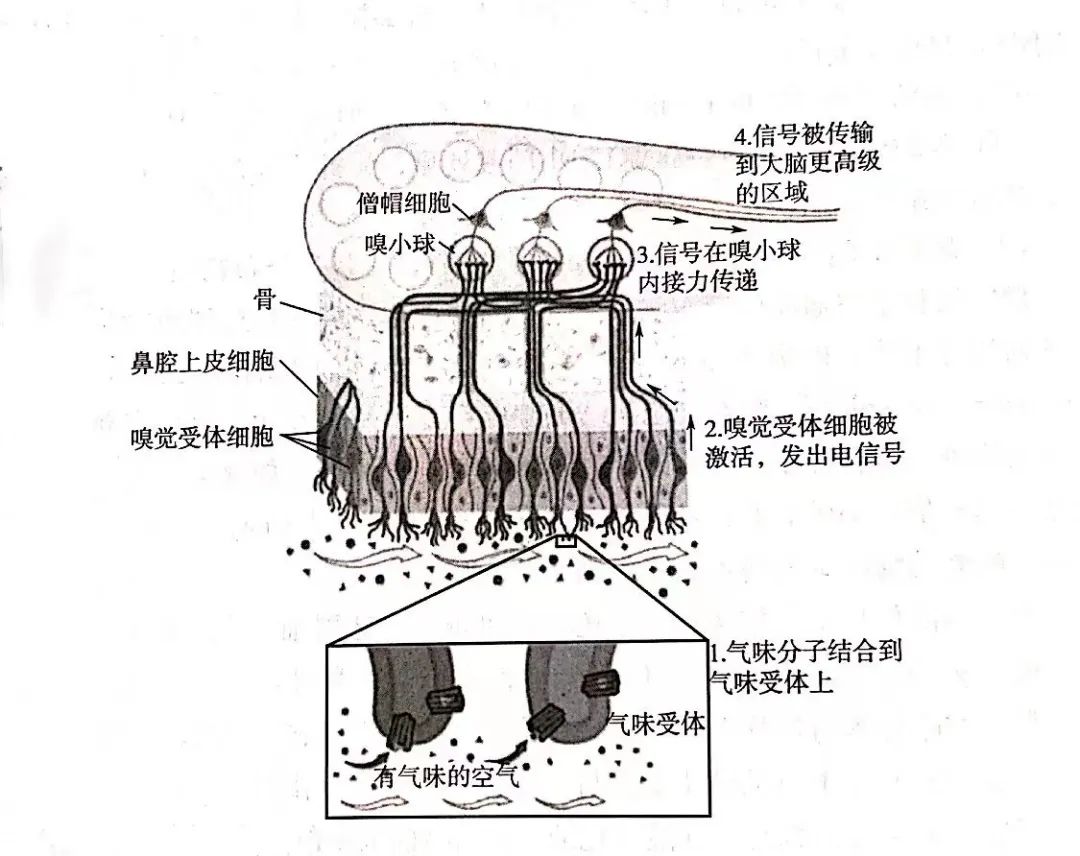Summary:
This article is the second part of the "Electronic Cigarette Sensory Evaluation Guide" series, focusing on the issues of odor perception and olfactory fatigue in the sensory evaluation of electronic cigarettes. Olfactory fatigue can lead to an evaluator's inability to accurately identify subtle differences between samples, thus affecting the accuracy of the evaluation. The article also introduces the two types of olfaction: orthonasal perception and retronasal perception, and their application in the sensory evaluation of electronic cigarettes. Understanding and reducing olfactory fatigue is crucial for professionals in the electronic cigarette industry.
本系列的第一期文章介绍了“电子烟评吸方法”的相关内容,点击下方链接直达上期文章。
Electronic Cigarette Sensory Evaluation Guide (Part 1): The Puffing Evaluation Method
本期将与大家一起了解电子烟感官评价中有关气味感知和嗅觉疲劳的相关内容。该系列将继续全面、深入地展开电子烟感官评价的相关内容,敬请关注。
Topic 2 感官评价中的气味感知与嗅觉疲劳
电子烟从业人员在进行感官评吸的过程中,必然碰到的一个棘手问题便是嗅觉疲劳,嗅觉疲劳的出现会使评吸人员失去对样品间细微差异的辨别能力,进而在测试样品当中“随便选一个”或“猜一个”,在感官评价中出现“猜测行为”,将严重影响感官评价结论的准确度。更糟糕的是,碍于面子,感官评吸人员往往会选择隐藏自己无法辨别样品之间的微小差异的事实。
在实践中,因为评吸人员出现嗅觉疲劳而导致的“猜测行为”,是非常普遍,也非常隐蔽的。这样的猜测行为将严重影响感官评价的结果以及后续的商业判断,因此,了解嗅觉、了解嗅觉疲劳,以及研究如何减小嗅觉疲劳带来的影响,对电子烟从业人员至关重要。
(1)了解嗅觉 (Olfactory)
此部分内容仅从电子烟从业者的角度出发进行简述。
目前为止,学术界对于嗅觉的认识大致达成了共识(图一),即嗅觉分为前鼻嗅觉(orthonasal perception)和后鼻嗅觉(retronasal perception)两部分。人鼻吸入气体时途经红色线路,使用前鼻嗅觉进行气味感知;而当口腔吃入食物,以及吸入电子烟时,途经的是蓝色线路,使用后鼻嗅觉进行气味感知。这两种嗅觉途经并不孤立发生,而是常常共同作用。后鼻嗅觉能够经过特殊的嗅觉感受器区域,能够更加全面地感受口腔中烟气的风味。
上一期内容中提到的局部循环评吸法和整体循环评吸法均是主要使用后鼻嗅觉进行评吸,而鼻吸法则是更多的用到我们的前鼻嗅觉。因此,使用鼻吸法进行评吸,很难全面地对烟气进行评价。

图一 嗅觉的两条通路 (Viola Bojanowski等,2012)
现在我们已经了解了电子烟的烟气(或气溶胶)是通过什么路径被我们所感受到,那么,在这些路径的尽头,又发生了什么?
我们通过嗅觉感知气味的过程如图二所示:有气味的空气(化学信号)与我们的气味受体结合后,激活了气味受体并产生离子涌动,化学信号因此转化为电信号,电信号经过一系列通路抵达大脑,形成气味感知。

图二 嗅觉系统组成示意图(宋焕禄等,2021)
参考文献:
宋焕禄, 王丽金, 2021. 食品风味化学与分析.
Viola Bojanowski & Thomas Hummel, 2012. Retronasal perception of odors, Physiology & Behavior, Volume 107, Issue 4, Pages 484-487.
Electronic Cigarette Sensory Evaluation Guide (Part 2): Odor Perception and Olfactory Fatigue
The first article in this series introduced the topic of "Electronic Cigarette Puffing Methods," which can be accessed through the link below.
Electronic Cigarette Sensory Evaluation Guide (Part 1): Puffing Methods
In this issue, we will explore the topics of odor perception and olfactory fatigue in the sensory evaluation of electronic cigarettes. The series will continue to provide a comprehensive and in-depth look at the sensory evaluation of electronic cigarettes, so please stay tuned.
Topic 2: Odor Perception and Olfactory Fatigue in Sensory Evaluation
A challenging issue that electronic cigarette industry professionals inevitably encounter during sensory evaluation is olfactory fatigue. The onset of olfactory fatigue can cause evaluators to lose their ability to discern subtle differences between samples, leading to a "guessing behavior" in the sensory evaluation, which severely affects the accuracy of the sensory assessment conclusions. Worse still, due to pride, sensory evaluators often choose to hide the fact that they cannot distinguish the minor differences between samples.
In practice, the "guessing behavior" resulting from olfactory fatigue among evaluators is very common and also very covert. Such guessing behavior can seriously affect the results of sensory evaluations and subsequent business judgments. Therefore, understanding olfaction, olfactory fatigue, and researching how to minimize the impact of olfactory fatigue is crucial for those working with electronic cigarettes.
(1) Understanding Olfaction (Olfactory)
This section is briefly described from the perspective of electronic cigarette industry practitioners.
To date, there is a general consensus in the academic community about our understanding of olfaction (Figure 1), which is that olfaction is divided into two parts: orthonasal perception and retronasal perception. When we inhale through the nose, the red pathway is used for orthonasal odor perception; whereas when we consume food orally or inhale electronic cigarette vapor, the blue pathway is used for retronasal odor perception. These two olfactory pathways are not isolated but often work together. Retronasal olfaction can pass through a special olfactory receptor area, allowing a more comprehensive perception of the flavor of the smoke in the mouth.
The local circulation puffing method and the overall circulation puffing method mentioned in the previous issue mainly employ retronasal olfaction for evaluation, while the nasal snuffing method makes more use of our orthonasal olfaction. Therefore, using the nasal snuffing method for evaluation makes it difficult to comprehensively assess the smoke.
Figure 1: The Two Pathways of Olfaction (Viola Bojanowski et al., 2012)
Now that we understand the pathways through which the vapor (or aerosol) from electronic cigarettes is perceived by us, what happens at the end of these pathways?
The process by which we perceive odors through olfaction is shown in Figure 2: Odoriferous air (chemical signals) binds to our odor receptors, activating them and generating ionic fluxes, thereby converting chemical signals into electrical signals. These electrical signals travel through a series of pathways to reach the brain, forming the perception of odor.
Figure 2: Schematic of the Olfactory System (Song Huanlu et al., 2021)
References:
Song Huanlu, Wang Lijin, 2021. Food Flavor Chemistry and Analysis.
Viola Bojanowski & Thomas Hummel, 2012. Retronasal perception of odors, Physiology & Behavior, Volume 107, Issue 4, Pages 484-487.
本期与大家一起了解了电子烟感官评价中的一大重要问题—嗅觉疲劳,以及我们如何通过嗅觉实现对电子烟烟气的感知。
下一期我们准备了“嗅觉疲劳是如何产生的”和“如何在电子烟感官评价中减少嗅觉疲劳带来的影响”两个话题
原创产品,制作不易,转载请注明出处。感谢各位的订阅和支持!
越多点赞,越多订阅,越多优质内容~~ 欢迎催更!!
原文始发于微信公众号(雾化探秘):Electronic Cigarette Sensory Evaluation Guide (Part 2): Odor Perception and Olfactory Fatigue
电子雾化与HNB产品都是新型电子产品,结构虽小,却融合应用多种材料、表面处理、芯片电子等技术工艺,而且雾化技术一直在不断更迭,供应链在逐步完善,为了促进供应链企业间有一个良好的对接交流,艾邦搭建产业微信群交流平台,欢迎加入;Vape e-cigarettes (VAPE) and Heat-Not-Burn e-cigarettes (HNB) are both emerging electronic products. Despite their compact size, they integrate various materials, surface treatment technologies, chip electronics, and other advanced technical processes. Moreover, atomization technology is constantly evolving and the supply chain is being progressively perfected. To facilitate good communication and networking among supply chain enterprises, Aibang has established an industry WeChat group communication platform and warmly welcomes interested enterprises to join.

